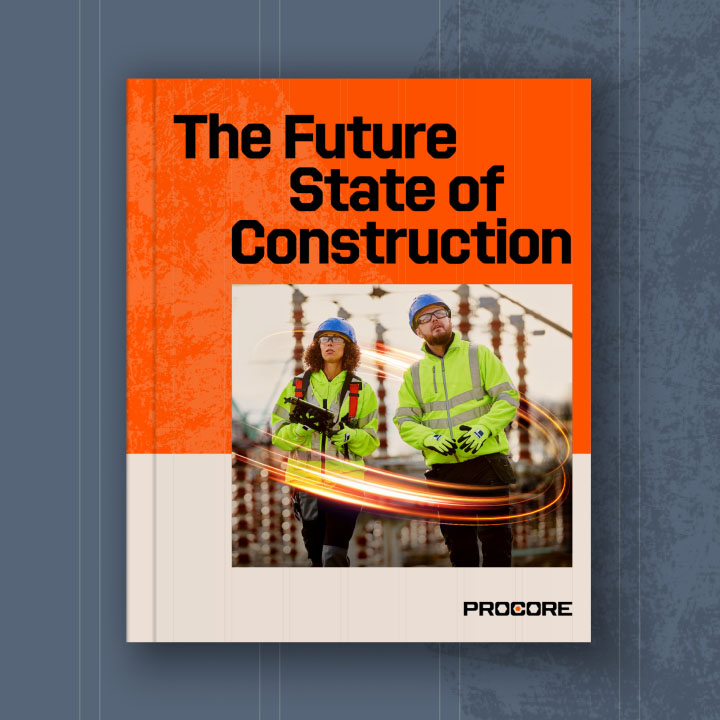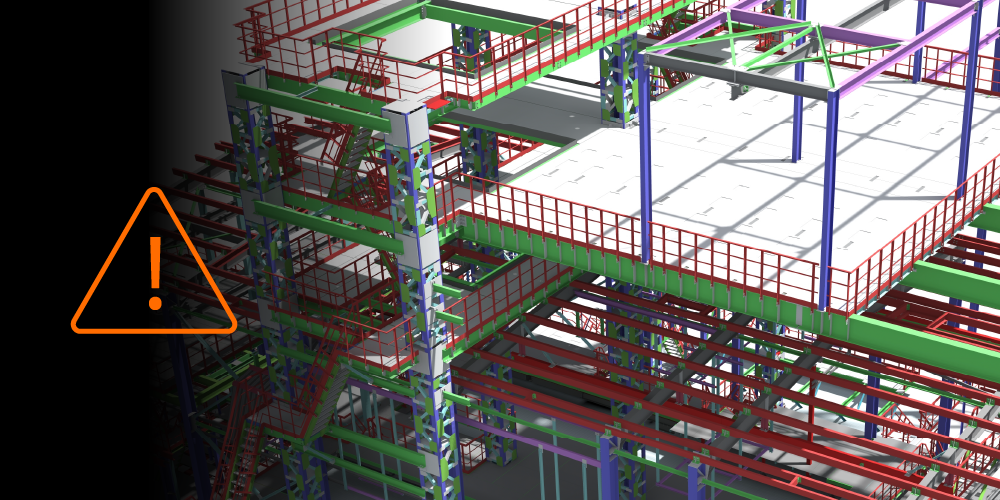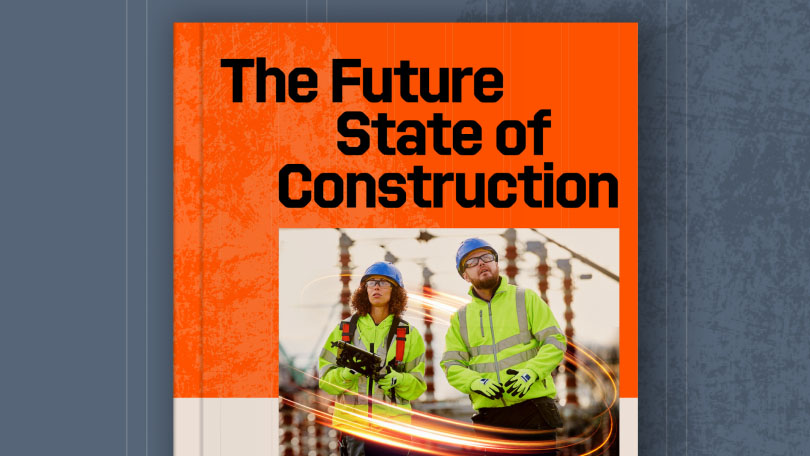Related Articles
— 7 min read
9 Common Construction Risks for Contractors & Owners

Last Updated Sep 10, 2025

Emma De Francesco
Strategic Product Consultant
22 articles
Emma is currently Strategic Product Consultant at Procore where she loves partnering with clients to help them achieve the best possible results. She has worked as a Project Manager in previous roles, responsible for overseeing small to medium-sized projects across various sectors including commercial, health and lifestyle, retail, government and hotels. Throughout these projects, she managed everything from project costs, program and quality & safety, to design management, procurement, and authority approvals.
Last Updated Sep 10, 2025

Construction is a tough, often volatile industry, with one of the highest rates of business failure of any economic sector. While construction can be a lucrative business, it is also high risk. Currently, construction leaders are looking to technology amongst other solutions to better take control of how they build. Predicting future risks, and taking steps to mitigate their impact, is critical to the success of any project. While it is impossible to eliminate entirely, identifying common sources of risk is the first step in minimising loss. Below, we'll explore some of the most common construction risks that can disrupt project schedules, erode profit margins, and drive expensive, lengthy disputes.
Table of contents
Delays
Without a doubt, delays are among the most common risks involved in construction. Pushing back the delivery date on projects affects everyone on the job. Delays can stem from a variety of places, including:
- Poor project management
- Permitting & inspections
- Supply chain disruptions
- Change orders
- Accidents
- Adverse weather
Delays can be caused by activities at any level of the chain, and both in the back office and on the jobsite. As a result, it is critical for owners and general contractors to establish clear communication processes that are easy to use by employees, subcontractors, and vendors alike. The sooner potential delays are identified and communicated to the construction manager, the faster they can take action to avoid or reduce the delay.
Documentation Errors
According to the Arcadis 2022 Construction Costs Report, the second-highest cause of disputes globally was errors and omissions in contract documents. The increasing size and complexity of commercial and public construction projects, combined with growing cost-saving pressure to speed up construction, creates more potential for errors and omissions in the preconstruction process. Errors in drawings, specifications, and design coordination can lead to increased capital costs and schedule delays.
The risk caused by documentation problems extends well beyond preconstruction. Head contractors and subcontractors must often meet stringent notice deadlines and submission requirements. Documentation errors or missed deadlines can delay payments and even invalidate a contractor's right to file a claim.
The risk of errors is compounded by the sheer volume of documents required to complete a project, including:
- Drawings
- Submittals
- Contract documents
- Notices
- Pay applications
- Lien waivers
- Variations
- and many others
Change Management
Any material change to the contract after construction begins is a significant risk to owners, contractors, and suppliers alike, because it will affect time, scope of work, materials, and cost.
When the head contractor receives an RFI from the owner that directs them to make a material change to the project, it kicks off a waterfall of events down the chain. The head contractor will issue RFIs to each subcontractor whose work is impacted.
Ideally, each subcontractor would submit a variation that details the cost and schedule adjustment required, and wait for the owner’s approval before they begin the work. But in the real world, in an effort to avoid or reduce schedule delays, contractors frequently get started on work before it is approved. In this all-too-common scenario, payment disputes between the owner and contractors are a near inevitability.
Risk prevention around change management begins during preconstruction. The more time and effort spent on investigating site conditions and reviewing drawings and site plans for accuracy, the fewer changes required after breaking ground. During the project, owners and contractors should follow a clear and efficient process for communicating and managing changes, doing everything possible to reduce the time between RFIs and variation approval.
Contractors can greatly reduce their risk of payment disputes over contract changes by getting an approved variation in hand before beginning the work.
Subcontractor Default
Subcontractor default is a serious risk, especially on complex projects that require a large number of subcontractors to complete specialised portions of work. The larger the project, the greater the number of subcontractors on the job. Pressure to accelerate construction often requires trade stacking and tight schedules with a very slim margin for error. When a subcontractor defaults on their contract or otherwise fails to perform, the entire project can be affected, especially if their scope of work falls on the critical path.

Supply Chain Issues
Building material shortages and price escalations can impact schedules, construction costs, and profit margins. Over the last few years, the global supply chain has experienced near-continuous setbacks and disruptions, with wide-ranging impacts on construction in progress.
Pricing for lumber and other materials has been volatile. But many contractors have had recent trouble even getting delivery of necessary materials. Cost increases and material shortages can be driven by:
- Shipping and trucking issues
- Natural disasters
- Business closures
- Spikes in demand
- Fuel prices
- Economic recession
- Strikes and labour disputes
Many construction contracts include an escalation clause to balance risk between the contractor to the owner in the event of price spikes. But construction managers and owners need to keep a close eye on global supply chain developments to monitor the risk of material shortages. A flexible and diversified supply chain is fast becoming essential for construction projects of any size.
Poor Project Management
Poor project management leads to miscommunication, delays, and disputes. When a head contractor or construction manager isn’t clear on what’s expected or does a poor job of scheduling subs, time and materials can go to waste.
Poor project management can cause a ripple effect across other projects as well, increasing the risk for subcontractors. When sloppy project management delays a subcontractor's work, it can disrupt schedules on other jobs and make labour and equipment coordination an impossible task.
Labour Shortages & Poorly Scoped Work
Labour presents a construction risk with projects of any size. Finding qualified, reliable employees is a growing challenge for businesses in every industry. There’s always a risk that workforce lined up for a project might fall through.
When a contractor takes on a project and discovers they don’t have the workforce to finish it, it can slow everyone on the job down. Again, this pushes out the timeline and cuts into profitability.
On union projects, the potential for a strike creates additional risk. Solidarity across locals can mean your entire union workforce walks off the project in protest of working conditions on another job beyond your control.
It’s hard to keep a project on track when it’s unclear what that track looks like. A poorly defined scope of work is a management issue that can (and usually does) roll downhill. Contractors working under a fixed price or lump sum contract should pay close attention to items like:
- Site conditions
- Customer input
- Materials pricing
These can drive the cost of a project up and profit margins down. However, there are mechanisms to use, like cost-plus contracts for avoiding the effects of a job without a definitive scope. Improving communication on every project level can lead to a better-defined scope and help you stay profitable by avoiding scope creep on your projects.
Health & Safety Hazards
The building industry consistently ranks at the top of the most dangerous industries. The risk of quality and safety hazards is a frequent concern for construction businesses, who want to both maintain a healthy workforce and avoid financial loss due to increased workers compensation insurance premiums or penalties from safety violations.
Safe Work Australia outlines the major risks to construction workers as well as the process to mitigate these risks and how to monitor them. Safe Work Australia offers a variety of educational resources to support construction safety programs.

Payment Disputes
The time to get paid in construction is among the longest of all industries. Slow payments create risk for everyone on a project, at all levels of the chain. Payment problems disrupt contractor cash flow and increase the risk of default. They also increase an owner's risk of lien claims on the property, as contractors and suppliers take action to recover unpaid contractual amounts.
Payment disputes arise frequently due to:
- Funding/financing delays
- Variations
- Retainage
- Lien waivers
- Back charges
- Work quality disputes
Comprehensive documentation, clear communication, and close adherence to contract requirements are vital for contractors to prove their case if it ends up in court.
See what’s coming in construction over the next decade.
Download the Future State of Construction Report for insights, trends, and innovations shaping the industry over the next 8–10 years.

Categories:
Written by

Emma De Francesco
Strategic Product Consultant | Procore
22 articles
Emma is currently Strategic Product Consultant at Procore where she loves partnering with clients to help them achieve the best possible results. She has worked as a Project Manager in previous roles, responsible for overseeing small to medium-sized projects across various sectors including commercial, health and lifestyle, retail, government and hotels. Throughout these projects, she managed everything from project costs, program and quality & safety, to design management, procurement, and authority approvals.
View profileExplore more helpful resources

Managing Direct Costs in Construction: How Visibility Drives Profitability
Direct costs define the financial reality of every construction project. They cover the labour, materials, and equipment that drive delivery and determine profitability. But even the best-planned budgets can shift...

BIM Clash Detection: Reducing Rework, Delays, and Risk in Construction
Design clashes can be a significant hidden cost in construction, as each conflict between systems risks expensive rework, project delays, and reduced margins. BIM clash detection empowers teams to identify...

Next-Gen Job-Costing: Ready to Move? 5 Things to Consider Before You Get Started
In this three-part series, Quantity Surveyor turned Financial Solutions Specialist Clint Burgess uncovers the real-world gains for people, processes, and profits when businesses move from legacy to next-generation Enterprise Resource...

From Workarounds to Workflow: Solving Construction’s Legacy Job-Costing System Challenges with Next-Gen Tools
In this three-part series, Quantity Surveyor turned Financial Solutions Specialist Clint Burgess uncovers the real-world gains for people, processes, and profits when businesses move from legacy to next-generation Enterprise Resource...
